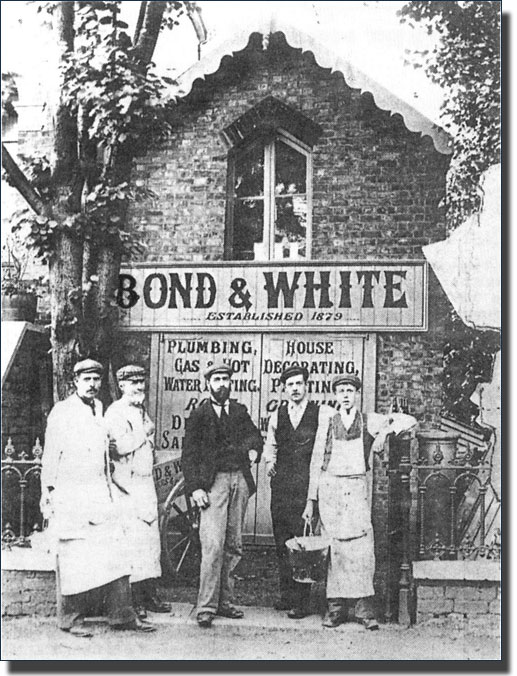Bond & White's
As one goes from house to house in a Collins estate one is always among familiar things, yet each house has its surprise. The same mouldings, carving and fretted panels have been seen in other houses. No house is quite the same shape as its neighbours, yet some parts may be identical, for these are real factory-made houses. In the 1960s the government announced that a revolution had struck the building industry: for the first time houses would be built in factories and merely erected on the site. A howl of laughter went up from architectural historians. What then had the Victorians and Edwardians been doing all this time? They had been building houses in factories a century before.
In 1900 there were thick pattern books for every side of the building industry. Joinery designs, flooring blocks, ironmongery, stained glass and cast-iron catalogues were on every building merchant's shelves. Macfarlane's Castings, Glasgow, who built for everyone, had a two volume catalogue bound in heavy green boards and totalling 698 pages, full of illustrations of castings of railings, stoves, fireplaces, east-iron floor panels, staircases, street lanterns, greenhouses, railway stations, shop fronts. It appeared that the whole world could be made of cast-iron. It was the ideal Victorian material, fireproof, cheap and everlasting. Collins's houses were full of cast iron. There are cast iron fireplaces, kitchen ranges, gutterings, coal-hole covers and baths. There is even a story of an iron founder who made himself a cast iron bowler hat.

Bond & White's on the site of 19 Barnard Hill, 1901-1914
Hornsey Historical Bulletin No 20.
137
